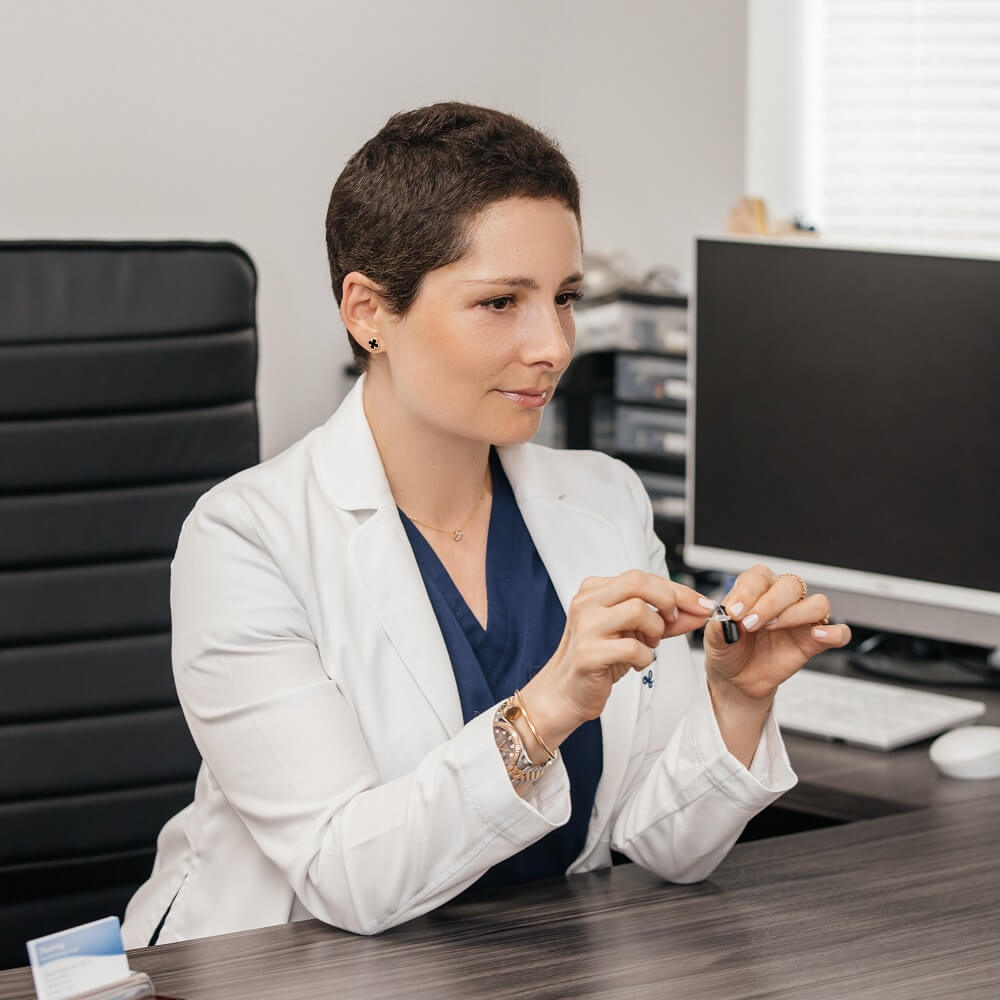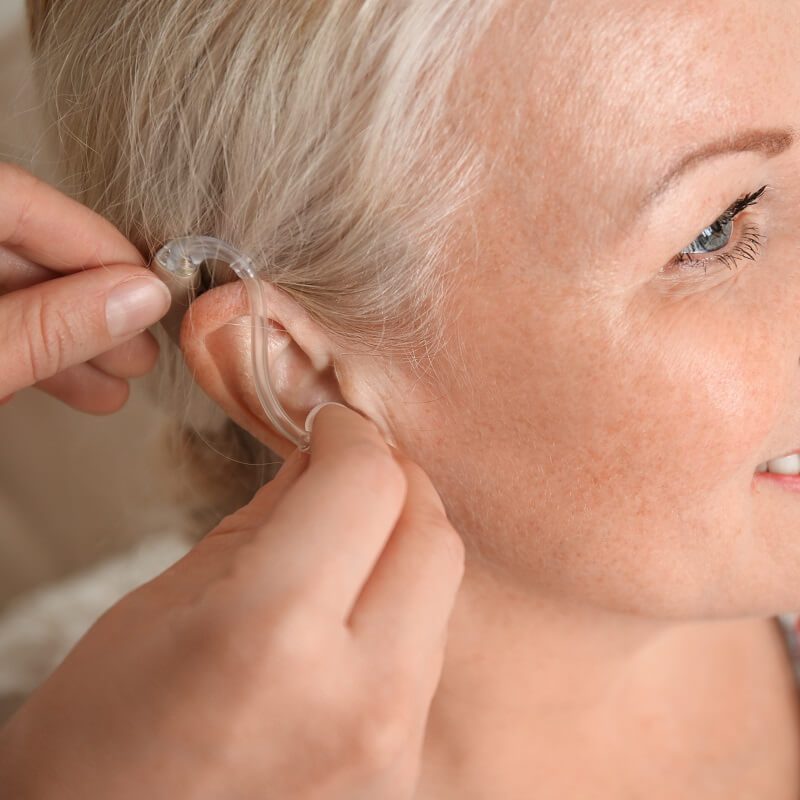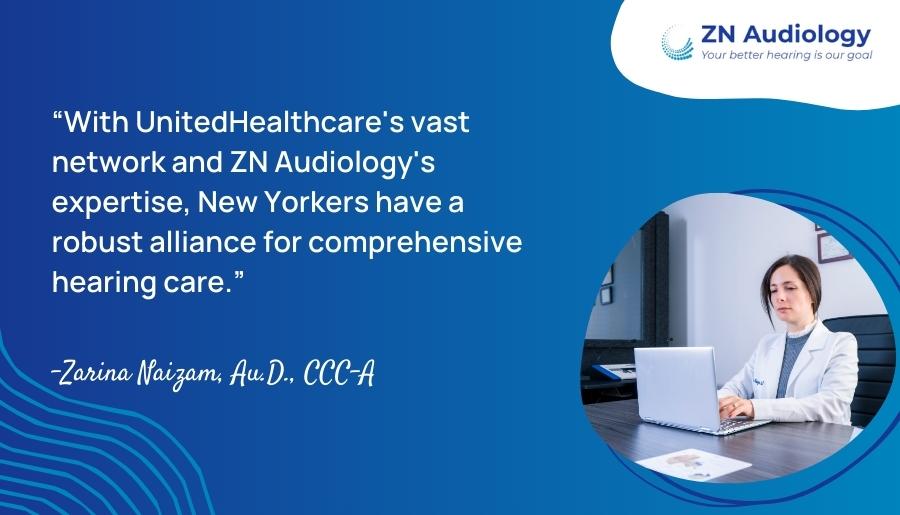Prescription Hearing Aids With Ongoing Support From a Hearing Care Professional
It is well documented that untreated hearing loss is linked to several health dangers, including higher rates of dementia, balance disorders, and depression, which experts link to the social isolation caused by hearing loss.
In addition to restoring relationships, hearing aids reduce the rate of cognitive decline, lower the chances of falling due to balance disorders, and can reduce your risk of stroke, peripheral vascular disease, and heart attack. Unfortunately, many individuals who may benefit from the use of hearing aids avoid them because of the outdated stigma attached to hearing aids like those worn by their parents or grandparents.
Advancements in digital technology, which transformed the bag phone into today’s smartphone, have also had a significant impact on the size and performance of today’s hearing aids. ZN Audiology in Brooklyn and Forest Hills, Queens, NYC, invites you to explore how advanced technology hearing aids are better able to address your hearing challenges and your quality of life than they did two decades ago.





Advanced Hearing Aid Technology
Frequently Asked Questions About Hearing Aids
How do I know if I need a hearing aid?
Those who are good candidates for hearing aids tend to experience one or several of the following issues:
- Muffled speech
- Aural stuffiness or fullness in the ears
- Difficulty understanding conversations on the phone
- Struggling to understand the voices of women and children
- Avoiding social events or busy restaurants because of annoying background noise
- Requiring a higher volume on the TV to hear it properly
- Often asking people to repeat themselves
Can hearing aids be repaired if they break or stop working?
Yes. The most common hearing aid issues involve moisture and wax buildup, but corrosion, shorts, and broken components are also common problems that can be addressed by a hearing aid repair specialist. Hearing aids usually come with a two-year warranty that covers repair or replacement costs if they are damaged beyond repair or lost.
Can hearing aids be worn while swimming or showering?
How do I clean and maintain my hearing aids?
How long does it take to adjust to wearing hearing aids?
The time necessary to adjust to hearing aids varies from one person to the next. With the help and support of your hearing care provider, you can shorten the duration of the adjustment period, but most individuals require less than 60 days to acclimate to their hearing aids.
How often do I need to replace my hearing aids?
Can hearing aids help with tinnitus?
Yes. By enhancing exterior sounds, hearing aids can reduce an individual’s awareness of their tinnitus. In addition, many modern hearing aids come with built-in tinnitus maskers or accompanying apps to help with tinnitus management.
Our Hearing Aid Selection Process
At ZN Audiology, we understand how dramatically a hearing impairment can affect relationships and the ability to enjoy life to the fullest, so our audiology team is fully dedicated to addressing our patients’ unique challenges and meeting their specific needs.
As an independent audiology and healthcare practice, we establish strong, long-term relationships with each patient, so you can count on us to provide superior hearing healthcare whether you are in need of custom hearing aids, hearing protection, or an assistive listening device.
In addition to providing a comprehensive diagnostic evaluation of your hearing in order to pinpoint the type and severity of your hearing loss, we program your hearing aids to specifically address your hearing impairment through a precise fitting process.


After fitting you with your hearing aids, we allow you a two-week trial period before you commit to buying them. In order to provide you with a broader choice to meet your unique needs and personal preferences, we partner with several brand-name manufacturers, such as:
-
 Oticon
Oticon
-
 Phonak
Phonak
-
 Starkey
Starkey
Once you’ve made your decision to continue wearing your hearing aids, we provide ongoing counseling, troubleshooting, technical support, cleaning, maintenance, and repair to ensure that you get the most out of your investment into better hearing.
Concerned about being able to afford a new pair of hearing aids? Our Care Credit Program allows our patients to finance their hearing aids without paying interest for up to 12 months.
Hearing Aid Styles
Behind-the-Ear (BTE) Hearing Aid Styles
Considered the traditional hearing aid style, BTE hearing aids feature a processing unit that rests behind the ear, but they differ from older units because they use digital technology to process sound. Sound processed in the behind-the-ear unit is transmitted in different manners and delivered to the outer ear in various ways, depending on the hearing aid style. BTE hearing aids tend to have greater processing power than ITE devices and usually include manual programming buttons and/or dials.

Behind-the-Ear (BTE)
BTE hearing aids tend to be the most powerful models. For anyone with a very severe to profound hearing loss, this style is still the best option. They offer directional microphones for improved hearing in background noise and built-in volume and program controls.

Receiver-in-Canal (RIC)
RIC hearing aids are the ideal solution for most first-time hearing aid users with a mild to moderate high-frequency hearing loss. Their nearly invisible open design offers unmatched comfort and a very natural sound.
In-the-Ear (ITE) Hearing Aid Styles
ITE hearing aids are a single component with processing and the speaker contained within the same housing. Different types of ITE hearing aids are distinguished by their size and where they are positioned in the ear canal. Among the advantages of ITE devices is the fact that they do not interfere with glasses, oxygen cannula, or headwear, and they can provide a more secure fit for more active individuals as well as provide greater wearing discretion.

Full Shell ITE
ITE hearing aids have the same fitting range and options as the ITC models but in a slightly larger design, making them easier to insert and remove. They also have a larger battery size, offering the longest battery life while making it easier to change batteries.

In-the-Canal (ITC)
ITC hearing aids are slightly visible and are best suited for mild to severe hearing losses. ITC hearing aids typically include directional microphones, which provide better hearing in noise.

Completely-in-the-Canal (ITC)/(IIC)
These are the smallest styles and are invisible or nearly invisible. They are best suited for mild to moderate hearing losses. Due to their small size, they require good dexterity and have a shorter battery life than some of the larger models.
Request a Callback
It’s often the small things that hold us back.
If you have a question, a concern, or require some no-obligation advice, then please complete this form and we’ll call you back for a friendly and helpful conversation.
We’ll be able to answer your questions, offer advice, and help you or a loved one on your hearing loss journey.
Don’t want to wait? Call us at the office most convenient to you:
Brooklyn: (347) 312-6298
Forest Hills: (718) 255-1113
"*" indicates required fields



